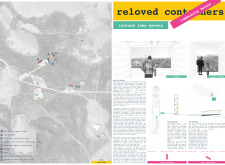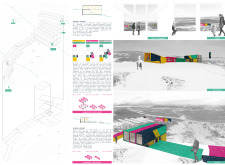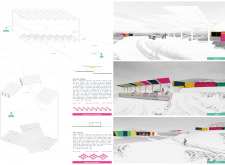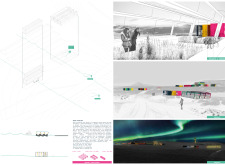5 key facts about this project
The architectural design emphasizes open spaces that facilitate community engagement while ensuring privacy for individual activities. Natural light plays a pivotal role, with large windows and skylights incorporated throughout the structure to minimize reliance on artificial lighting. The use of outdoor terraces and green roofs not only provides spaces for social gatherings but also promotes environmental sustainability by improving air quality and reducing heat island effects.
Distinctive Design Features
What sets this project apart from more conventional designs is its commitment to biophilic design principles. The incorporation of lush greenery within and around the building creates visual connections with nature, significantly improving the well-being of occupants. Vertical gardens are strategically placed to enhance aesthetic appeal while also promoting biodiversity. This integration of nature extends into the interior, where plant life is featured prominently in communal areas, fostering a sense of tranquility and connectedness.
The architectural approach includes the thoughtful selection of materials, prioritizing sustainability without compromising on aesthetics. The use of locally sourced timber and recycled steel accentuates the project's commitment to sustainability while providing a contemporary feel. Additionally, energy-efficient glazing is utilized to improve thermal performance and contribute to the building’s overall efficiency.
Functional Aspects and Community Integration
The overall layout of the project ensures that functional aspects are seamlessly integrated. The ground floor is designed as an interactive space that encourages foot traffic through open storefronts, cafes, and communal areas. Above the commercial sections, flexible office and working spaces are tailored to accommodate a variety of professional needs. This versatility is a critical element, as it allows the space to adapt to changing societal trends and user requirements.
Special attention is given to ensuring that all facilities comply with accessibility standards, enhancing usability for individuals of all abilities. Thoughtful design elements, such as gentle ramps and tactile paving, reflect a commitment to inclusivity. Furthermore, designated areas for community events and workshops encourage local participation, reinforcing the project’s function as a social hub.
In summary, the project stands out due to its integration of biophilic design principles, sustainable materiality, and focus on community engagement. To explore the full extent of this architectural endeavor, including architectural plans, sections, and detailed design elements, readers are encouraged to review the project presentation for comprehensive insights into its innovative design ideas.


























